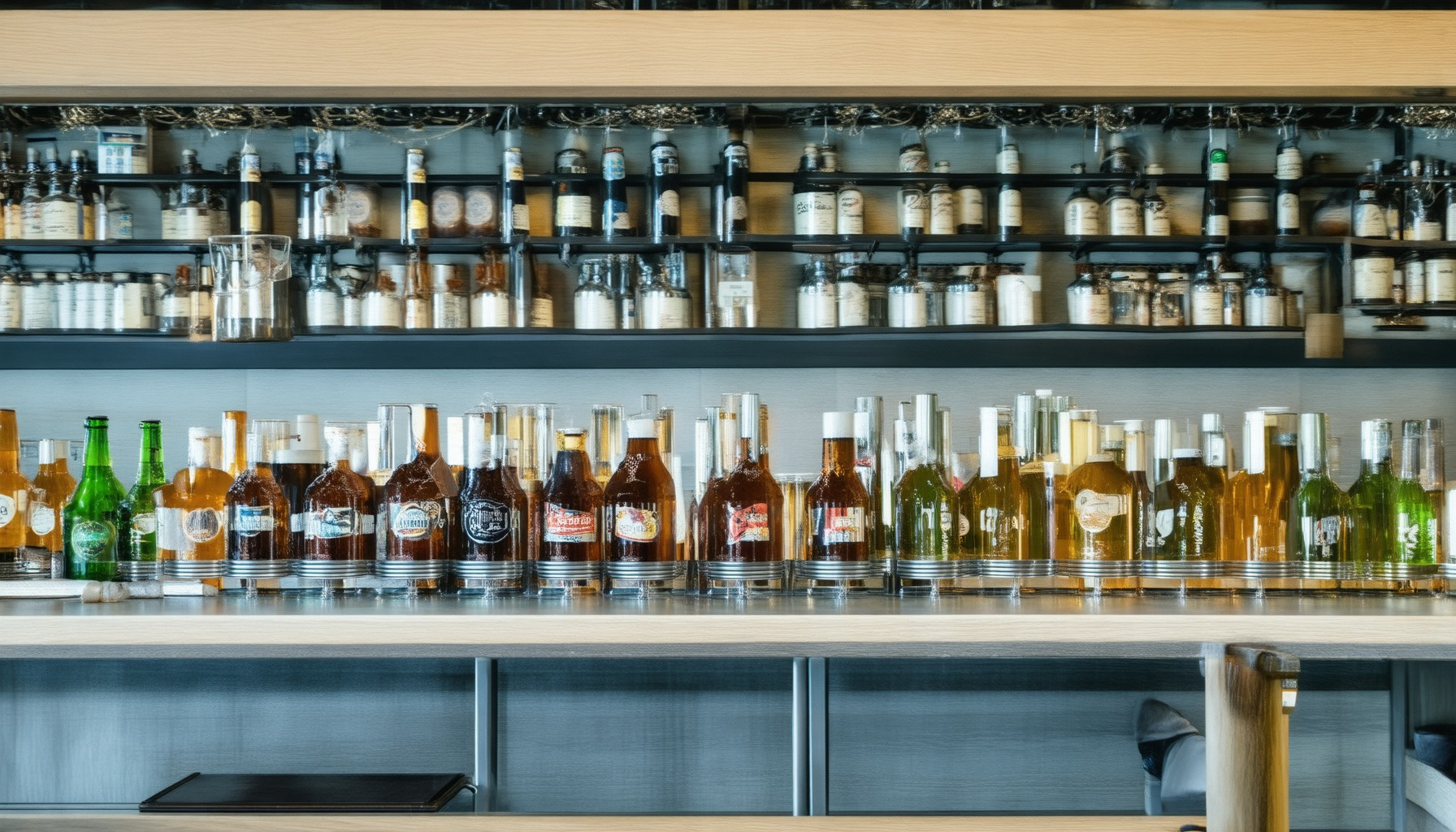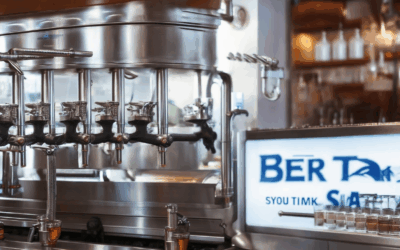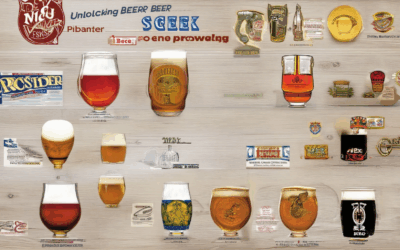Exploring the art and science behind beer practices offers a fascinating journey into the world of craft brewing, where tradition meets innovation to create flavors that captivate the senses. From reducing environmental footprints through eco-friendly brewing methods to unlocking the full potential of hops and yeast, modern beer practices are redefining what it means to craft a quality brew. Whether you’re a seasoned beer enthusiast or new to the craft, understanding the principles that shape beer flavor, sustainability, and quality is key to appreciating the complexity of this beloved beverage. In this article, we delve deeper into the secrets of crafting the perfect beer, exploring everything from malt selection and fermentation techniques to the importance of water quality and brewhouse efficiency. Get ready to discover how thoughtful beer practices can elevate your drinking experience and contribute to a more sustainable future.
Key Takeaways
– Choose high-quality malted barley for its ability to convert starches into sugars during fermentation.
– Optimize hop utilization by selecting varieties like Amarillo for IPAs or Willamette for porters to achieve desired bitterness and flavor.
– Prioritize soft water to enhance malt character and improve overall flavor profiles.
– Use yeast strains like American ale yeast for faster fermentation or German lager yeast for smoother lagers.
– Maintain precise temperature control during fermentation (50-70°F for ales, 45-50°F for lagers) to ensure yeast health and flavor development.
– Implement rigorous sanitation practices, such as using StarSan, to prevent contamination and ensure a clean brewing environment.
– Monitor and regulate boil point to extract optimal malt flavors and aromas.
– Enhance beer quality through cold lagering (2-4 weeks) for improved clarity and mouthfeel.
– Serve ales around 45°F and lagers at 38°F for optimal flavor and mouthfeel.

Sustainable Beer Practices: Environmental Benefits
The environmental benefits of sustainable beer practices are significant and varied, contributing to a healthier planet while supporting responsible brewing processes. Here are the key advantages:
- Water Conservation : Sustainable practices reduce water usage through efficient recycling and re-use systems. Traditional brewing often consumes large amounts of water, but innovative techniques allow breweries to reuse water during the fermentation process, minimizing their ecological footprint.
- Energy Efficiency : By adopting energy-saving technologies and renewable energy sources, breweries can drastically reduce their carbon emissions. High-efficiency machinery and solar panel installations are becoming common in sustainable breweries, lowering their energy bills and environmental impact.
- Waste Reduction : Sustainable practices focus on managing waste effectively. Composting spent grains for animal feed and utilizing biodegradable packaging helps minimize landfill contributions, promoting a circular economy and reducing environmental degradation.
- Carbon Emissions Mitigation : Brewers are implementing carbon capture technologies and investing in carbon-neutral transportation methods to offset unavoidable emissions, working towards net-zero goals and combating climate change.
- Local Sourcing and Biodiversity : Sustainable sourcing of ingredients supports local ecosystems and biodiversity. Locally-grown hops and barley require less water and fewer pesticides, contributing to regional agricultural sustainability.
- Eco-Friendly Packaging Innovations : Transitioning to cans and lightweight materials reduces transportation energy and carbon output, further enhancing the environmental profile of beer production.
- Certification and Transparency : Eco-certified breweries adhere to rigorous standards, providing consumers with trustable information about their environmental practices, fostering transparency and accountability.
These practices not only preserve natural resources but also align with consumer demand for responsibly produced goods, driving the industry toward a more sustainable future.
How Different Beer Practices Influence Flavor Profiles
The flavor profile of beer is shaped by a variety of practices, each contributing uniquely to its taste, aroma, and overall character. Here’s a breakdown of how these factors influence the final product:
- Malt Selection :
- Malt variety significantly impacts the beer’s sweetness, body, and depth. Pale malt yields a light, crisp beer, while roasted malt introduces earthy, nutty, or smoky flavors.
- The amount of malt used also affects the beer’s strength and alcohol content.
- Yeast Type :
- Yeast plays a crucial role in fermentation. Top-fermenting yeasts (Ale Yeast) often produce fruity and spicy notes due to higher fermentation temperatures.
- Bottom-fermenting yeasts (Lager Yeast) typically result in cleaner flavors with subtle fruitiness and a smooth mouthfeel.
- Fermentation Temperature :
- Lower fermentation temperatures slow yeast activity, allowing more time for complex flavor development.
- Higher temperatures accelerate fermentation, potentially leading to faster attenuation and a drier finish.
- Aging Duration :
- Extended aging allows flavors to meld, resulting in a smoother and more harmonious beer.
- Aged beers may develop notes of oak, vanilla, or caramel, depending on the vessel used.
- Water Source and Treatment :
- The water’s mineral content influences the beer’s flavor profile. Soft water tends to yield lighter beers, while hard water can increase bitterness.
- Boiling water before use or adding salts can adjust the water’s profile, enhancing the beer’s balance.
- Hops Variety and Usage :
- Bittering hops are added early to counteract malt sweetness, while aromatic hops are added late to enhance flavor and aroma.
- The quantity and timing of hop addition significantly affect the beer’s bitterness and aroma.
- Brewing Process :
- Techniques like decoction mashing involve boiling a portion of the mash to extract deeper color and flavor, adding complexity.
- Dry hopping, where hops are added post-fermation, enhances aroma without significant bitterness.
By understanding and manipulating these variables, brewers can craft beers with distinct flavor profiles, catering to a wide range of tastes and preferences.

What Are the Key Practices Involved in Crafting a Perfect Beer?
Crafting a perfect beer involves a meticulous process that combines tradition, innovation, and attention to detail. Below are the essential practices that contribute to creating a beer with exceptional flavor, aroma, and character:
Ingredients
The foundation of any great beer lies in its ingredients. Here are the key components:
- Malted Grains: Typically barley, which is kilned, roasted, or smoked to achieve unique flavors and colors.
- Hops: Used for bitterness, flavor, and aroma. Different varieties like Cascade, Centennial, and Amarillo bring distinct characteristics.
- Yeast: Essential for fermentation. Ale yeasts are fast-fermenting and produce fruity notes, while lager yeasts are slow and provide cleaner flavors.
- Water: Quality is crucial. Soft water allows malt and hops to shine, while hard water can complement certain styles.
Mashing
Mashing is the process of breaking down starches in malted grains to convert them into sugars. This step is critical for determining the beer’s body and sweetness:
- Temperature Control: Mashing temperatures vary by style. Lower temps (like 152°F) for Pilsners maximize bitterness, while higher temps (165-168°F) for Porters enhance body.
- Stirring and Monitoring: Regular stirring ensures even conversion and prevents stuck mashes, which can ruin the batch.
Boiling
Boiling extracts flavors and aromas from hops and balances the beer’s bitterness:
- Hop Addition: Hops are added late in the boil to retain volatile aromatic compounds, contributing to the finished beer’s flavor.
- Boil Volume: A full boil (around 10 gallons for a standard recipe) maximizes extraction, while a partial boil reduces it, affecting bitterness.
Fermentation
This step transforms sugar into alcohol and imparts the beer’s character through yeast activity:
- Yeast Culture: Selecting the right yeast strain is key. Brettanomyces adds funky, earthy notes, while German ale yeasts provide clean finishes.
- Temperature Control: Fermentation temperatures affect flavor and mouthfeel. Lower temps (50-55°F) for lagers promote a crisp finish, while warmer temps (60-70°F) for ales enhance fruitiness.
- Aeration: Proper oxygenation during fermentation ensures healthy yeast growth and optimal flavor development.
Aging
Longer aging periods allow flavors to meld and carbonation to stabilize:
- Lager Aging: Typically 2-6 months at cold temperatures (like 35°F) to develop a clean, crisp profile.
- Ale Aging: Months of cellaring at warmer temperatures enhances complexity and allows flavors to mature.
Sanitation
Cleanliness is paramount to prevent contamination and ensure a safe brewing environment:
- Sanitization Steps: Use proper cleaning agents and sanitize all equipment before and during the brewing process.
- Hygiene Practices: Keep working areas and tools clean to minimize the risk of wild yeast infections or bacteria.
By mastering these practices, brewers can craft beers that reflect their unique style and preferences. Whether you’re brewing a traditional lager or an experimental sour, attention to detail at every stage is key to creating a beer that stands out.

Essential Practices for Creating a Quality Beer
To craft a quality beer, follow these essential practices:
Ingredients Selection
- Malted barley is the foundation, converting starches to sugars during fermentation.
- Select high-quality hops for bitterness and flavor, varying by beer style (e.g., Amarillo for IPAs, Willamette for porters).
- Water plays a role in flavor; aim for soft water to enhance malt character.
- Yeast is critical; use American ale yeast for faster fermentation or German lager yeast for smoother lagers.
Brewing Process
- Milling: Grind grains to release starches for efficient extraction.
- Mashing: Heat mashed grains to convert starches to fermentable sugars, adjusting temperature for desired sweetness.
- Boiling: Add hops for bitterness and flavor, aiming for a 60-minute boil for maximum extraction.
- Fermentation: Monitor temperature (50-70°F for ales, 45-50°F for lagers) and adjust pH for optimal yeast health.
- Aging: Cold lagering (2-4 weeks) improves clarity and mouthfeel, while quick kegging preserves freshness for ales.
Sanitation and Hygiene
- Clean and sanitize all equipment before use to prevent contamination.
- Use a reliable sanitizer like StarSan to maintain hygiene standards.
Equipment Setup
- Equip with a mash tun, boil kettle, fermenters, and conditioning tanks.
- Monitor temperature, pH, and specific gravity throughout the process.
Serving Recommendations
- Serve ales around 45°F and lagers at 38°F for optimal flavor and mouthfeel.
- Consider aging for 2-4 weeks post-fermentation for improved taste and clarity.
By mastering these practices, you can consistently brew high-quality beers, tailoring each batch to your preferences and style.
What Are the Key Practices Involved in Brewing Great-Tasting Beer?
Brewing great-tasting beer involves a combination of precision, creativity, and attention to detail. Here are the essential practices that contribute to crafting a flavorful and high-quality beer:
- Malt Selection: Choosing the right type and quality of malt is critical. Different malts contribute unique flavors and textures, so matching the malt to the beer style is essential for balance and complexity.
- Water Treatment: The water used in brewing plays a significant role in the final taste. Proper treatment ensures the water aligns with the malt and hops, enhancing overall flavor profiles.
- Hop Utilization: Hops add bitterness, aroma, and flavor to beer. The use of whole hops, hop extract, or hop pellets can vary based on the desired beer style and bitterness level.
- Fermentation Temperature Control: Managing fermentation temperatures is vital for yeast health and flavor development. Different temperatures yield distinct characteristics, from fruity notes to earthy tones.
- Cleaning and Sanitization: Maintaining clean equipment is non-negotiable. Proper cleaning and sanitization prevent contamination, ensuring a consistent and safe brewing process.
- Aeration During Fermentation: Providing adequate oxygen during fermentation ensures healthy yeast activity, leading to better attenuation and a smoother finish.
- Boil Point Management: Controlling the boil ensures precise extraction of malt flavors and aromas. Adjusting the boil duration and volume helps achieve the desired balance in the beer.
- Conditioning Post-Fermentation: Adding sugar or using lactobacillus can adjust the final flavor, body, and mouthfeel, enhancing the drinking experience.
For more detailed insights into specific practices like malt selection and water treatment , explore The Goods On Tap’s comprehensive brewing resources.

Key Practices Involved in Creating a Quality Beer
To craft a quality beer, several critical practices must be meticulously executed. Here’s a breakdown of the essential steps:
1. Ingredient Sourcing
- Malt Selection: Choosing high-quality malt is fundamental. Different malts contribute unique flavors, so selecting the right type based on the beer style is crucial.
- Hops Usage: Hops add bitterness and aroma. Selecting the correct variety and timing their addition during the brewing process enhances flavor complexity.
- Yeast Management: Proper yeast handling ensures clean fermentation. Using active dry yeast or brewing-specific strains can yield better results.
- Water Quality: Clean, soft water is essential. Hard water can interfere with flavor and mouthfeel, so softening or using treated water is recommended.
2. Temperature Control
- Brewing: Maintaining precise temperatures during the mashing phase ensures starch conversion and extracts optimal sugars for fermentation.
- Fermentation: Yeast activity thrives within a narrow temperature range. Monitoring and controlling this ensures consistent flavor development.
- Aging: Lagers benefit from extended cold storage, allowing flavors to meld and defects to settle.
3. Fermentation Process
- Aeration: Providing oxygen during the early stages of fermentation kickstarts yeast growth and metabolism.
- Monitoring: Regular checking ensures the fermation environment remains stable, preventing off-flavors and infections.
- Punching Down: Regularly stirring the wort ensures even distribution of yeast and extracts maximum flavor.
4. Aging and Conditioning
- Aging: Storing beer in tanks or barrels allows flavors to develop further, smoothing out harshness and adding depth.
- Conditioning: Adding carbohydrates or lactobacillus can adjust mouthfeel and acidity, enhancing drinkability.
5. Finishing and Carbonation
- Finishing: Using techniques like dry hopping or adding vanilla beans can add unique character.
- Carbonation: Properly carbonating beer ensures a crisp finish, complementing the beer’s body and flavor profile.
By masterfully executing these practices, brewers can consistently produce high-quality beers that delight discerning drinkers.





0 Comments